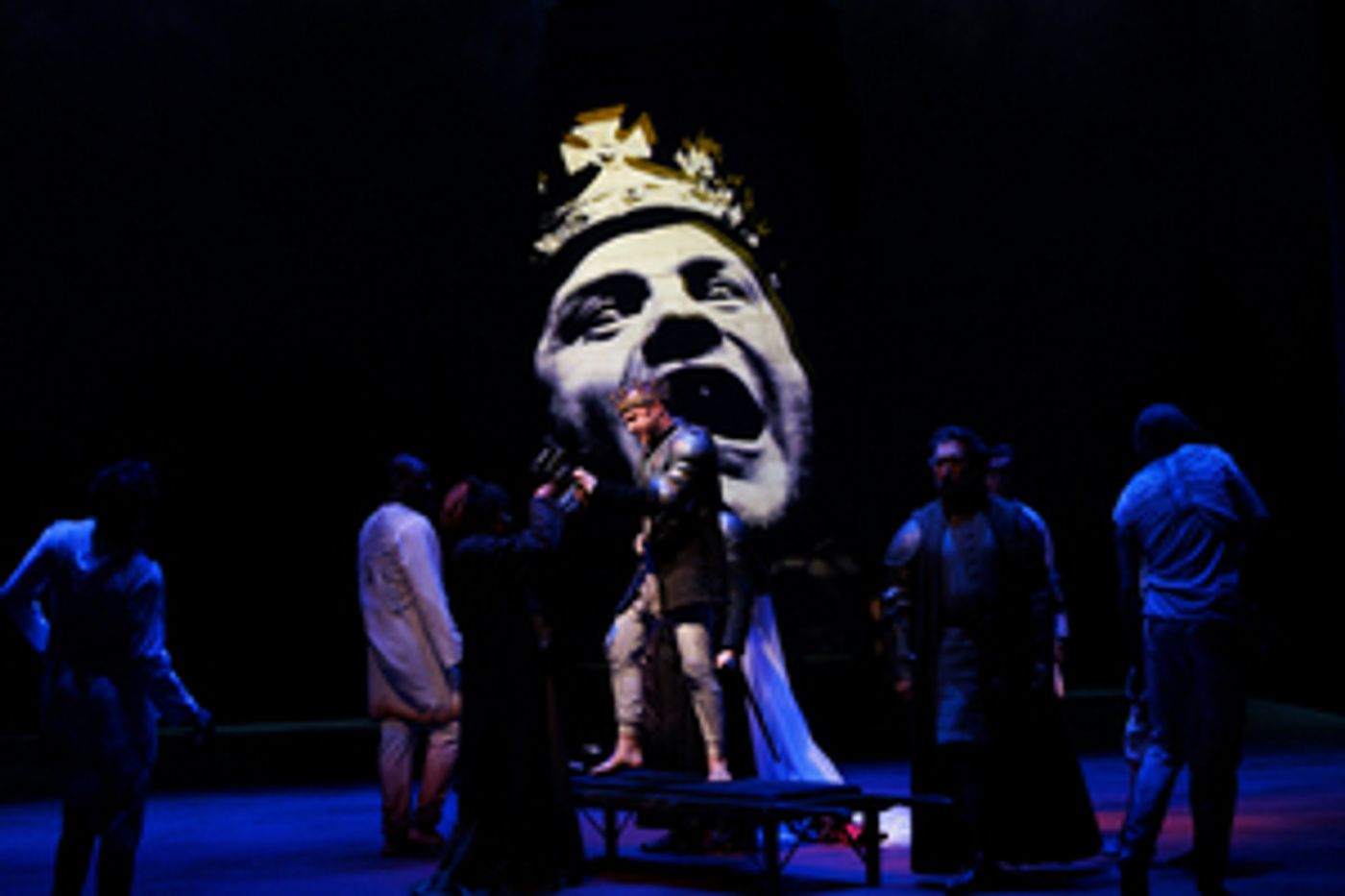Review Roundup: RICHARD III, at the Royal Shakespeare Theatre
What did the critics think of the RSC's production?

Directed by outgoing RSC Artistic Director Gregory Doran and starring Arthur Hughes, the new production of Shakespeare's Richard III has now opened at the Royal Shakespeare Theatre in Stratford-Upon-Avon.
Young Richard of Gloucester uses the chaos of the Wars of the Roses to begin his unscrupulous climb to power. Despite being manifestly unfit to govern, he seizes the crown, as King Richard III. But how does he do it?
How do we let tyrants get away with it? How do they find their way to power? Why do we buy into it? And how can it be stopped?
Richard III is a savagely comic analysis of the exercise of power. It reminds us both of the dangers of tyranny and of our duty not to let it go unchecked.
So what did the critics think?
Gary Naylor: BroadwayWorld: Arthur Hughes, differently-limbed and a magnetic presence, is who he is: no hours in make-up for him, no detailed work with a movement director to get it just right, no inauthentic pity claimed. One feels that those opening words shouldn't be so affecting - the able treating those differently abled as victims first and foremost doesn't sit right either these days - but it's hard to shake the impact of that scene no matter how conspiratorial and conniving Richard becomes. It's a confession with the ring of truth from a man who speaks only for his advantage henceforth.
Arifa Akbar: The Guardian: Hughes's Richard is every bit the schemer, dead-eyed and unmoved by the body count he leaves on the way to the throne, but he also has a smarmy mischief about him, delivering news of another dispatched victim in a breezy tone of voice and eking comic asides out of his character's darkness.
It gives a strange note to his villainy. He does not always seem vicious enough, even when he is giving orders to kill former allies.
Michael Davies: WhatsOnStage: Designer Stephen Brimson Lewis and composer Paul Englishby add much to the dramatic success. The space is almost entirely empty except for a huge cenotaph upstage centre, and Matt Daw's lighting generates much of the atmosphere. Lewis's costumes are essentially traditional, in keeping with the aesthetic, and it looks magnificent. From the ghosts' eerie incarnation to the extraordinary grey locks of Minnie Gale's extraordinary, vengeful Queen Margaret, every detail is carefully placed.
Clive Davis: The Times: Down comes another barrier, Arthur Hughes becoming the first disabled actor to play King Richard at the RSC. That's certainly one sound reason to welcome this production, which also marks Gregory Doran's final outing as the company's artistic director. It looks glorious too. Stephen Brimson Lewis's austere set design, soaked in blood red, is dominated by a cenotaph-like tower, an impassive witness to the courtiers' machinations. A boy chorister, standing in a gallery, signals the advent of new murderous chapters in the intrigue.
James Garrington: The Reviews Hub: This Richard is a long way from the limping, shuffling figure that we often see. Hughes takes a naturalistic approach to his role, and in so doing he creates a character that is entirely believable. How do tyrants rise to power, and why do people let them? This production shows you exactly how, as we see Richard using his wit and charm to win people over to his side, making sure his detractors are discredited and anyone standing in his way disposed of. On the surface, we see a character who is very likeable, a man you could drink with and have a good time, one who will make you laugh with his amusing one-liners and comic retorts. In fact, the whole of the very lengthy first act is often laugh-out-loud funny. Even his darker deeds are carried out with a smile and a joke and although the time passes quickly, a bit of trimming or adjustment of where the interval sits wouldn't go amiss.
Dave Fargnoli: The Stage: The show benefits from clear, coherent design work that helps to establish a heightened, thriller-tinged tone from the outset. Stephen Brimson Lewis' design is stark and dramatic, dominated by a towering grey cenotaph that looms over the action, which is often splashed with lurid scarlet or inky blue light. Great wrought-iron gates swing shut across the spacious stage for scenes adjacent to the Tower of London, while for just a single scene a throne rises through the floor on a tiered podium before sinking back out of sight, a symbol of Richard's fleeting time in power.
Photo Credit: Ellie Kurttz
Reader Reviews
Videos

